Mitochondria are the ‘energy powerhouse of the cell’ that convert the foods we eat to usable energy our body uses to fuel life sustaining reactions within cells, our daily activities and athletic performance 1-4. While energy production capability and muscle performance might seem to be more relevant to sports, it also equally important for achievement and maintenance of health throughout the life span. In this article I will describe how chronological aging affects our mitochondria, its implications and the ins-and-outs of a new type of supplements marketed at “exercise mimetics”.
This is a long article, so here are some jump-to links:
Exercise Mimetics
PQQ
Quercetin
Resveratrol
Naringin
Downsides…
Conclusion
To navigate back up, just hit ctrl+home. Oki, roll up your sleeves and off we go….
Age related mitochondrial changes and implications
Brain, heart, and skeletal muscle mitochondria are especially susceptible to age-induced declines in the capacity to produce energy (ATP), and ability to respond to increased energy demands 2-6. It is well documented that mitochondrial number, mass and function declines with aging 2-5, and that this decline plays an important role in the etiology of many disorders, including cardiovascular diseases, obesity, diabetes, neurodegenerative diseases, and cancer 7-15. Physical inactivity and poor exercise capacity is a risk factor not only for the development of these diseases 8 16-18, but also causes frailty, age-related physiologic functional declines 19-22, and accelerates secondary aging (i.e., aging caused by diseases and environmental factors) 15.
The importance of exercise for mitochondrial function and prevention of age-related declines
We all know that exercise training increases muscle mitochondria number, mass and function 23-26. Regular exercise counteracts the age-related decline in muscle mitochondrial expression and function 27-32 and protects against development of age-related metabolic diseases like the metabolic syndrome, obesity, and diabetes 9 28 29 33-36. Thus, regular exercise increases healthy life expectancy and prolongs life span through beneficial effects, in large part, at the level of the mitochondria 28.
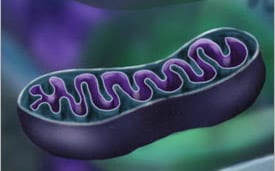 Muscle is the tissue with the largest capacity to increase caloric expenditure and energy production, and possesses the unique ability to increase metabolic rate nearly 100-fold during the transition from a basal resting state to maximal contractile activity 37. Being such a metabolic prowess, the importance of mitochondria in muscle tissue is obvious. However, exercise training also has beneficial effects on mitochondria in other tissues, especially the heart 38 39, and brain 40. In the resting state, these tissues actually consume more calories on a per gram basis than does muscle tissue 41 42. Several of the beneficial cardioprotective effects of exercise training can be traced to improved cardiac mitochondrial function 38, and regular exercise also increases brain mitochondrial biogenesis 40. This may have important implications, not only with regard to fatigue, but also with respect to various central nervous system diseases and age-related dementia that are often characterized by mitochondrial dysfunction 40.
Muscle is the tissue with the largest capacity to increase caloric expenditure and energy production, and possesses the unique ability to increase metabolic rate nearly 100-fold during the transition from a basal resting state to maximal contractile activity 37. Being such a metabolic prowess, the importance of mitochondria in muscle tissue is obvious. However, exercise training also has beneficial effects on mitochondria in other tissues, especially the heart 38 39, and brain 40. In the resting state, these tissues actually consume more calories on a per gram basis than does muscle tissue 41 42. Several of the beneficial cardioprotective effects of exercise training can be traced to improved cardiac mitochondrial function 38, and regular exercise also increases brain mitochondrial biogenesis 40. This may have important implications, not only with regard to fatigue, but also with respect to various central nervous system diseases and age-related dementia that are often characterized by mitochondrial dysfunction 40.
Recent advances in molecular biology have shed light on the mechanisms that regulate mitochondrial biogenesis (production of new mitochondria), and how exercise stimulates mitochondrial biogenesis. This is interesting not only from a physiological standpoint, but also from practical standpoint since it has allowed discovery of dietary substances (and potentially drugs) that could help us combat the age related mitochondrial decline. More on this in a bit. First, let’s take a quick look at what happens to our mitochondria when we exercise.
Mitochondria at the molecular level – exercise induced signaling targets
Energy stress from exercise triggers a host of signaling pathways in muscle cells 43-47. One of the identified exercise-induced signals is AMPK (AMP-activated protein kinase) 48-50. AMPK functions as a metabolic “fuel sensor” in muscle cells because it becomes activated in response to decreased energy levels (like for ex. during muscle contractions), and in turn activates catabolic processes that generate and restore ATP levels 48 51 52.
Another energy sensor is SIRT1 (Sirtuin-1) 51 53 54. There are actually seven sirtuins 55; they have generated a lot of scientific interest after the discovery that sitruins partly mediate the increase in longevity with calorie restriction that has been seen in lower organism and animals 56-60. But sirtuins regulate a wide range of important biological processes 61. One of them is muscle precursor cell (MPC) proliferation. The finding that SIRT1 increases muscle precursor cell proliferation is very interesting since MPC proliferation has important implications in regulating muscle growth, maintenance, repair, and the aging-related loss of skeletal muscle mass 62. 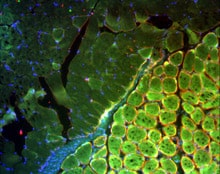
Adult muscle stem cells, also called satellite cells or muscle precursor cells (MPCs), play an important role in the remarkable ability of muscle fibers to grow in size, repair and regenerate 63 64. A hallmark of aging is diminished regenerative ability of muscle tissues, which is in large part due to age-related changes in tissue-specific stem cells 65. Muscle precursor cells are important not only for regeneration after tissue damage, but also for maintenance. Age-related muscle loss (sarcopenia) is caused in large part by atrophy of type II muscle fibers 66, which is associated with a fiber type-specific decline in muscle precursor cell content 66. Thus, SIRT1 is an attractive target for dietary/exercise interventions to prevent the loss of muscle mass and function with aging 66.
SIRT1 also works jointly with AMPK in regulating cellular fuel metabolism, inflammation, and mitochondrial function 51. In addition, SIRT1 activates and increases the activity of PGC-1 (peroxisome proliferator-activated receptor-γ coactivator, a transcriptional coactivator), which finally activates transcription factors that turn on genes in our DNA that produce new mitochondria 23-25 54 67. One such transcription factor is PPAR-gamma, which also contributes to mitochondrial biogenesis 68.
Of the mentioned “control points” (AMPK, SIRT1, PPAR-gamma and PGC-1), PGC-1 is considered the “master regulator” of mitochondrial biogenesis 69-71. It also increases oxidative phosphorylation and ATP (energy) production 71. As a result, increased expression of PGC-1 has been shown to increase peak oxygen uptake and delay fatigue during prolonged exercise 69. In addition to its stimulatory effect on mitochondrial biogenesis and function, PGC-1 also regulates muscle fueling stores by increasing muscle glucose uptake, augmenting muscle glycogen storage, and preventing muscle glycogen depletion during exercise 72.
Ok, now you know enough molecular biology to understand the rationale behind exercise mimetics, which we will focus on next.
Exercise Mimetics
Elucidation of the molecular mechanisms behind mitochondrial biogenesis and function, coupled with the identification of dietary substances that seem to increase the expression of PGC-1, SIRT1, AMPK etc. and/or their regulators, has led to great interest in developing drugs and dietary supplements to target the SIRT1-PGC-1 complex and related signaling pathways 47 50 73-75. 
Because these supplements and drugs activate some of the signaling pathways that are activated by exercise, they have been labeled as “exercise mimetics” 47 74. Here’s a rundown of some dietary bioactive substances that are currently in the scientific spotlight for their potential exercise mimetic effects.
PQQ
PQQ (short for Pyrroloquinoline Quinone, and also called methoxatin) is a less well known dietary compound that was discovered 1979 76-78. PQQ is present in tissues and body fluids, including human milk 79-81 and in foods. The richest dietary sources are 82:
Natto (fermented soybeans) 61 ng PQQ/g
Parsley 34 ng PQQ/g
Green tea 30 ng PQQ/g
Green pepper 28 ng PQQ/g
Kiwi 27 ng PQQ/g
Papaya 27 ng PQQ/g
Tofu (soybean curd) 24 ng PQQ/g
Spinach 22 ng PQQ/g
Carrot 17 ng PQQ/g
When you read supplement labels, remember that 1 milligram (mg) = 1,000,000 nanogram (ng)
PQQ acts as an antioxidant 83, enzyme cofactor 84-91, nero-protectant 92-95, cardio-protectant 96-98, and may have an important role in cell signaling 92 99-101. In this context, the most interesting function of PQQ is that it affects the expression of genes involved in mithochondrial functions and biogenesis (most notably, PGC-1) 99 102.
The nutritional importance of PQQ has been demonstrated by feeding rats and mice a diet that is devoid of PQQ; the animals show growth retardation, reproductive failure, compromised immune responses, skeletal deformities aortic aneurysms, and fragile skin 91 103 104. This strongly suggests that PQQ is necessary for normal body functions and health. It is actually being debated whether PQQ might become the “next vitamin” 78 88.
What’s more interesting is that varying the amount of PQQ in diets causes modulation in mitochondrial content, alters lipid metabolism, and reverses inhibition elicited by classical mitochondrial function inhibitors 97 104-106. PQQ deficiency decreases both mitochondrial function and number 106. The most recent study on PQQ fed rats a nutritionally complete diet either with or without PQQ 105. The rats that got the PQQ diet not only exhibited lower blood triglycerides but also showed increased energy expenditure, hepatic (liver) mitochondrial content. In contrast, the rats that were fed the PQQ deficient diet instead exhibited deterioration in mitochondrial function, a lowered energy expenditure and reduced capacity to oxidize fat for energy (that is, reduced fat burning) 105. However, at the time of this writing, no human study has investigated the effect(s) of PQQ on metabolic, muscular and mitochondrial parameters. PQQ can already be found on the supplement market, but for now we will have to be our own lab rats.
Quercetin
A natural polyphenolic flavonoid, quercetin is present in a wide variety of food plants, including red onions, apples, and berries 107 108. Known for its multiple health benefits 109-118, it has recently been shown that quercetin also beneficially affects mitochondrial energeti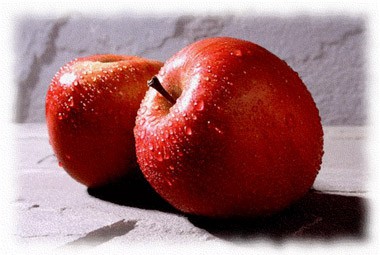 cs 119 120 and stimulates mitochondrial biogenesis (by increasing expression of PGC-1alpha and SIRT1) 121. The quercetin-induced increase in mitochondrial biogenesis was accompanied 121 with both maximal endurance capacity and voluntary wheel-running activity in mice 121.
cs 119 120 and stimulates mitochondrial biogenesis (by increasing expression of PGC-1alpha and SIRT1) 121. The quercetin-induced increase in mitochondrial biogenesis was accompanied 121 with both maximal endurance capacity and voluntary wheel-running activity in mice 121.
However, findings from the few research studies on the ergogenic (i.e. performance enhancing) effects of quercetin supplementation in humans are equivocal 122-127. A small preliminary study showed that when given in combination with other antioxidants for 6 weeks, quercetin improved endurance time-trial performance on a bicycle ergometer in humans 126. Another study, conducted by the same research team that showed performance enhancing effects in mice, gave healthy but untrained participants 500 mg of quercetin twice daily. After 7 days it was shown that the quercetin supplementation resulted in a modest increase in VO2max along with a substantial (13.2%) increase in ride time to fatigue 125. It was concluded that quercetin supplementation can increase endurance without previous exercise training in untrained participants 125. In contrast, another controlled study conducted by another research team, which gave young healthy recreationally active men 1 g/day of quercetin in a sports hydration for 16 days failed to show any benefits over placebo; the quercetin supplementation did not improve neither muscle oxidative capacity or performance in a 10 min maximal-effort cycling test 124. Also, supplementing with 1 g/day of quercetin for 3 weeks in trained cyclists failed to show a performance benefits 127.
A recently published meta-analysis of human studies on quercetin and performance concluded that quercetin supplementation significantly endurance performance, but that the effect is very small 128. The computed effect size for the performance enhancement was 3-5% over placebo 128. This can be compared to the effect size for the performance enhancement with caffeine, which is in the range of 12% over placebo 129. If at all, people with low fitness levels will probably most likely experience a performance benefit of quercetin supplementation, since highly fit individuals already have an elevated mitochondrial density and function.
There is a possibility that a longer supplementation duration is necessary for quercetin to exert a performance enhancing effect, and/or that it could be ergogenic in elderly. Hopefully, future studies will address that. Thus, while quercetin is a prudent supplement to take for its beneficial health effect, if you’re looking for a boost in mitochondrial function and/or performance, don’t expect too much.
Resveratrol
Resveratrol is the most well known SIRT1 activator 130-132. A natural compound present in grapes (especially grape skin) 133 134, resveratrol has been in the spotlight since it was found to be one major factor explaining the French paradox and conferring the cardioprotective effect of red wine 135-140. Fresh grape skin contains about 0.05-0.1 mg resveratrol per gram, while red wine is a concentrated source of resveratrol providing up to 14 mg per liter. Resveratrol also protects against cancer 135, and induces several signaling pathways that are also seen with calorie restriction (I will cover this more in an upcoming article on calorie restriction mimetics).
More recently, it has been shown that resveratrol also might improve mitochondrial function and stimulate mothochondrial biogenesis 131 141. In mice, intake of resveratrol together with habitual exercise, suppresses the aging-related decline in physical performance 141. This effect was attributable, at least in part, to improved muscle mitochondrial function 141. Another mice study showed that resveratrol increases aerobic capacity, as evidenced by an increased running time to exhaustion 131. On a molecular level, this effect was paralleled by an induction of genes for oxidative phosphorylation, increase in PGC-1alpha activity and enhanced mitochondrial biogenesis 131. Resveratrol also seems to be able to counteract muscle atrophy during periods of physical inactivity (mechanical unloading) in rats 142.
However, while there is ample of human data on the health promoting effects of resveratrol, at the time of this writing there are no human studies on its potential mitochondrial, metabolic and/or performance enhancing effects.
Naringin
Another potential mitochondrial booster is naringin, which like nootkatone, is a flavonoid present in grapefruit, and also in other citrus fruits 170 171. Upon ingestion, the colonic microflora converts naringin to naringenin, which is the active form in the body 172. In contrast the other bioactive compounds mentioned in this article, naringin primarily targets the liver, where it activates both PPAR-gamma and PPAR-alpha with a concomitant increase in hepatic fat oxidation (fat burning) and inhibition of fat and cholesterol synthesis 173. An interesting recent finding is that naringin also seems to induce PGC-1 transcription, and thereby possibly could stimulate mitochondrial biogenesis in the liver as well. Since the liver is the metabolic hub in the body, this could have beneficial systemic (whole-body) effects. Naringin has already been shown in humans to have several beneficial health effects by preventing cardiovascular disease, protecting against cancer and being anti-inflammatory 171 174-177, so if you try this supplement it won’t hurt you even though the evidence for its potential effect on mitochondrial biogenesis is still in its infancy.
Downsides…
The potential of exercise mimetics certainly appeals to the huge mass of lazy folks who cannot get their butts off the couch, and the pharmaceutical and supplement industry that sees the tremendous market potential. So we’ll most certainly be hearing a lot about these “exercise pills” in the near future. However, I want to emphasize that an “exercise pill” will never ever be a substitute for actual exercise training. Why? For several reasons:
Firstly, mimicking activation of exercise signaling pathways could result in a chronic catabolic state. For example, activation of AMPK could inhibit protein synthesis 152 and stimulate autophagy (cell cannibalism, that is, degradation of a cell’s own components through the lysosomal machinery) 153. Also, while augmenting oxidative capacity in mice, overproduction of PGC-1α in muscle has been shown to result in severe muscle atrophy as mice aged 154. These effects would clearly be detrimental, especially for aging people. This underscores the importance of striking an optimum balance between continuous compared with transient activation of exercise signaling pathways.
Secondly, intense exercise bouts induce significant temporary stress on various organ systems. With an over 15-fold increase in whole body oxygen consumption when transitioning from complete rest to intense exercise, it is no surprise that a complex myriad of signaling pathways are activated in multiple tissues, of which we only know a few. Even though science is making progress in elucidating the exercise response on a molecular level, we are still barely just scraping the tip of the iceberg.
Thirdly, exercise training has multiple health benefits that do not, at least directly or entirely, relate to the muscle-specific adaptations. For example, cardiovascular adaptations like blood pressure reduction and improved blood lipid profile are not completely (albeit partly) due to muscle-specific adaptations 155 156. This is further underscored by the finding that beneficial effects of regular exercise are even seen in arteries of non-exercise-trained limbs 157-160. Additionally, regular exercise results in a host of other health benefits; it prevents or reduces the severity of dementia and other neurological disorders, osteoarthritis, osteoporosis, fall-related injuries, depression, certain cancers and cardiovascular diseases 16 18 161-165. Exercise also improves cardiac function and enhances stroke volume, increases VO2max (the maximal oxygen uptake, or aerobic capacity, which is the maximum capacity of the body to transport and use oxygen during exercise), increases nitric oxide levels in vascular endothelial cells, increases bone mass and strength, enhances the immune system, lowers TNF-α and other inflammatory markers, improves insulin sensitivity and blood lipid profiles, and increases muscle capillarization, muscle size and muscle strength 161 166. Obviously, no single pharmaceutical or dietary agent could mimic this multifaceted response.
Fourthly, in order for an “exercise mimetic” to mimic the effect of exercise on obesity, it would have to result in an increase in energy expenditure to the same degree as exercise. Even though PQQ increases energy expenditure in rats (see above), this increase is nowhere near the increase that is seen with exercise. An increase in muscle mitochondria enhances exercise capacity and endurance, making it possible to expend more total energy, or the same amount of energy in a shorter time. So, an increase in mitochondria enhances the capacity to expend calories by means of exercise, and thereby could make exercise more effective in preventing and/or treating obesity. However, an increase in mitochondria per se has no major independent effect (in the absence of exercise) on energy expenditure.
Finally, regular exercise has psychological effects on constructs like self-mastery 167, self-esteem 167, self-perception 167, self-efficacy 168 self-regulation 168 and also social engagement 167, which no “magic” mimetic pill ever will be able to reproduce. The psychological effects of exercise might actually be at least as important as the physiological effects in the achievement of fat loss 154. This is an areas that I think deserves more attention. 
A poly-pill containing a number of agents aimed at selected targets could theoretically address the second and third objection. However, as indicated in objection one, it is likely to be associated with multiple unwanted effects, and to be of questionable long-term efficacy. Thus, with the discovery and development of tissue-specific targets, only limited aspects of the exercise response can be mimicked. The term ‘exercise mimetic’ is therefore misleading, and could lull a false sense of security and give lazy folk another excuse not to exercise “I took this exercise pill so I don’t have to go to the gym”…. These days, unfortunately the general tendency is to look for a pill to solve our problems anytime we face obstacles. This fact is aptly highlighted by a comment from one of the most prominent researchers on the health benefits of regular physical activity “When will we treat physical activity as a legitimate medical therapy…even though it does not come in a pill?” 169.
Conclusion
Exercise mimetics work by stimulating some of the molecular pathways that are also activated by actual exercise. Pharmacological stimulation of AMPK and PGC-1 in sedentary mice has been shown to induce metabolic genes and enhanced running endurance even without exercise 50. Similarly, SIRT1 activation could protect against metabolic disorders by stimulating fat burning (oxidation). Also, the question remains as to what extent data from cell culture and rodent st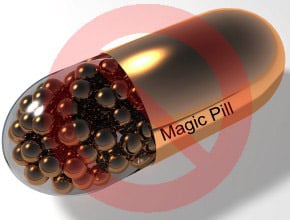 udies can be extrapolated to humans.
udies can be extrapolated to humans.
However, the terms “exercise mimetic”, and its synonym “exercise pill”, are very misleading. I prefer the term “mitochondrial booster”, since it doesn’t erroneously imply that these types of pills can substitute for the real thing. A mitochondrial booster (or exercise mimetic, if you wish) supplement could be a great adjunct to exercise, but never ever a substitute.
Bearing all the caveats in mind, since actual exercise and exercise mimetics at least partly target the same molecular pathways at potentially complementary control points, it is extremely interesting to speculate on the possible synergistic effects between exercise and exercise mimetics on muscle, mitochondrial function, performance, and in preventing the age-related declines in muscular function…indeed, there are preliminary data pointing towards promising synergistic effects 50. Rest assured I will be keeping you posted here on BrinkZone.com.
However, exercise is and always will be necessary. Sorry folks, there are no magic bullets. There’s simply no way around it. Amen!!!
So here’s the take-home message:
If you are a regular exerciser; an exercise mimetic/mitochondrial booster could give you a little extra “push” and possibly enhance your long-term training response.
If you are a couch potato; no pill in the word will ever make up for your lazy ass!
References:
1. McBride HM, Neuspiel M, Wasiak S. Mitochondria: more than just a powerhouse. Current biology : CB 2006;16(14):R551-60.
2. Kwong LK, Sohal RS. Age-related changes in activities of mitochondrial electron transport complexes in various tissues of the mouse. Archives of biochemistry and biophysics 2000;373(1):16-22.
3. Navarro A, Boveris A. The mitochondrial energy transduction system and the aging process. American journal of physiology. Cell physiology 2007;292(2):C670-86.
4. Torii K, Sugiyama S, Takagi K, Satake T, Ozawa T. Age-related decrease in respiratory muscle mitochondrial function in rats. American journal of respiratory cell and molecular biology 1992;6(1):88-92.
5. Vina J, Gomez-Cabrera MC, Borras C, Froio T, Sanchis-Gomar F, Martinez-Bello VE, et al. Mitochondrial biogenesis in exercise and in ageing. Advanced drug delivery reviews 2009;61(14):1369-74.
6. Onyango IG, Lu J, Rodova M, Lezi E, Crafter AB, Swerdlow RH. Regulation of neuron mitochondrial biogenesis and relevance to brain health. Biochimica et biophysica acta 2010;1802(1):228-34.
7. Calabrese V, Scapagnini G, Giuffrida Stella AM, Bates TE, Clark JB. Mitochondrial involvement in brain function and dysfunction: relevance to aging, neurodegenerative disorders and longevity. Neurochemical research 2001;26(6):739-64.
8. Tarnopolsky MA, Raha S. Mitochondrial myopathies: diagnosis, exercise intolerance, and treatment options. Medicine and science in sports and exercise 2005;37(12):2086-93.
9. Wallace DC. A mitochondrial paradigm of metabolic and degenerative diseases, aging, and cancer: a dawn for evolutionary medicine. Annual review of genetics 2005;39:359-407.
10. Holloszy JO. The biology of aging. Mayo Clinic proceedings. Mayo Clinic 2000;75 Suppl:S3-8; discussion S8-9.
11. Castillo-Garzon MJ, Ruiz JR, Ortega FB, Gutierrez A. Anti-aging therapy through fitness enhancement. Clinical interventions in aging 2006;1(3):213-20.
12. Ren J, Pulakat L, Whaley-Connell A, Sowers JR. Mitochondrial biogenesis in the metabolic syndrome and cardiovascular disease. J Mol Med (Berl) 2010;88(10):993-1001.
13. Jornayvaz FR, Shulman GI. Regulation of mitochondrial biogenesis. Essays Biochem 2010;47:69-84.
14. Booth FW, Hargreaves M. Understanding multi-organ pathology from insufficient exercise. J Appl Physiol 2011.
15. Booth FW, Laye MJ, Roberts MD. Lifetime sedentary living accelerates some aspects of secondary aging. J Appl Physiol 2011.
16. Booth FW, Gordon SE, Carlson CJ, Hamilton MT. Waging war on modern chronic diseases: primary prevention through exercise biology. J Appl Physiol 2000;88(2):774-87.
17. Heckman GA, McKelvie RS. Cardiovascular aging and exercise in healthy older adults. Clinical journal of sport medicine : official journal of the Canadian Academy of Sport Medicine 2008;18(6):479-85.
18. Kruk J. Physical activity in the prevention of the most frequent chronic diseases: an analysis of the recent evidence. Asian Pacific journal of cancer prevention : APJCP 2007;8(3):325-38.
19. Evans WJ, Campbell WW. Sarcopenia and age-related changes in body composition and functional capacity. The Journal of nutrition 1993;123(2 Suppl):465-8.
20. Hawkins SA, Wiswell RA, Marcell TJ. Exercise and the master athlete–a model of successful aging? The journals of gerontology. Series A, Biological sciences and medical sciences 2003;58(11):1009-11.
21. Marcell TJ. Sarcopenia: causes, consequences, and preventions. The journals of gerontology. Series A, Biological sciences and medical sciences 2003;58(10):M911-6.
22. Roubenoff R. Sarcopenia and its implications for the elderly. European journal of clinical nutrition 2000;54 Suppl 3:S40-7.
23. Coffey VG, Hawley JA. The molecular bases of training adaptation. Sports Med 2007;37(9):737-63.
24. Hamilton MT, Booth FW. Skeletal muscle adaptation to exercise: a century of progress. J Appl Physiol 2000;88(1):327-31.
25. Hawley JA, Holloszy JO. Exercise: it’s the real thing! Nutrition reviews 2009;67(3):172-8.
26. Holloszy JO. Biochemical adaptations in muscle. Effects of exercise on mitochondrial oxygen uptake and respiratory enzyme activity in skeletal muscle. The Journal of biological chemistry 1967;242(9):2278-82.
27. Lanza IR, Nair KS. Muscle mitochondrial changes with aging and exercise. The American journal of clinical nutrition 2009;89(1):467S-71S.
28. Lanza IR, Nair KS. Mitochondrial function as a determinant of life span. Pflugers Archiv : European journal of physiology 2010;459(2):277-89.
29. Lanza IR, Short DK, Short KR, Raghavakaimal S, Basu R, Joyner MJ, et al. Endurance exercise as a countermeasure for aging. Diabetes 2008;57(11):2933-42.
30. Nair KS. Aging muscle. The American journal of clinical nutrition 2005;81(5):953-63.
31. Short KR, Bigelow ML, Kahl J, Singh R, Coenen-Schimke J, Raghavakaimal S, et al. Decline in skeletal muscle mitochondrial function with aging in humans. Proceedings of the National Academy of Sciences of the United States of America 2005;102(15):5618-23.
32. Booth FW, Zwetsloot KA. Basic concepts about genes, inactivity and aging. Scandinavian journal of medicine & science in sports 2010;20(1):1-4.
33. Booth FW, Shanely RA. The biochemical basis of the health effects of exercise: an integrative view. The Proceedings of the Nutrition Society 2004;63(2):199-203.
34. Petersen KF, Befroy D, Dufour S, Dziura J, Ariyan C, Rothman DL, et al. Mitochondrial dysfunction in the elderly: possible role in insulin resistance. Science 2003;300(5622):1140-2.
35. Petersen KF, Shulman GI. Pathogenesis of skeletal muscle insulin resistance in type 2 diabetes mellitus. The American journal of cardiology 2002;90(5A):11G-18G.
36. Rogers MA, King DS, Hagberg JM, Ehsani AA, Holloszy JO. Effect of 10 days of physical inactivity on glucose tolerance in master athletes. J Appl Physiol 1990;68(5):1833-7.
37. Lanza IR, Sreekumaran Nair K. Regulation of skeletal muscle mitochondrial function: genes to proteins. Acta Physiol (Oxf) 2010;199(4):529-47.
38. Ascensao A, Lumini-Oliveira J, Oliveira PJ, Magalhaes J. Mitochondria as a target for exercise-induced cardioprotection. Current drug targets 2011;12(6):860-71.
39. Ascensao A, Ferreira R, Magalhaes J. Exercise-induced cardioprotection–biochemical, morphological and functional evidence in whole tissue and isolated mitochondria. International journal of cardiology 2007;117(1):16-30.
40. Steiner JL, Murphy EA, McClellan JL, Carmichael MD, Davis JM. Exercise Training Increases Mitochondrial Biogenesis in the Brain. J Appl Physiol 2011.
41. Illner K, Brinkmann G, Heller M, Bosy-Westphal A, Muller MJ. Metabolically active components of fat free mass and resting energy expenditure in nonobese adults. American journal of physiology. Endocrinology and metabolism 2000;278(2):E308-15.
42. Bosy-Westphal A, Kossel E, Goele K, Later W, Hitze B, Settler U, et al. Contribution of individual organ mass loss to weight loss-associated decline in resting energy expenditure. The American journal of clinical nutrition 2009;90(4):993-1001.
43. Bassel-Duby R, Olson EN. Signaling pathways in skeletal muscle remodeling. Annual review of biochemistry 2006;75:19-37.
44. Hawley JA, Hargreaves M, Zierath JR. Signalling mechanisms in skeletal muscle: role in substrate selection and muscle adaptation. Essays Biochem 2006;42:1-12.
45. Booth FW, Chakravarthy MV, Spangenburg EE. Exercise and gene expression: physiological regulation of the human genome through physical activity. The Journal of physiology 2002;543(Pt 2):399-411.
46. Pilegaard H, Saltin B, Neufer PD. Exercise induces transient transcriptional activation of the PGC-1alpha gene in human skeletal muscle. The Journal of physiology 2003;546(Pt 3):851-8.
47. Matsakas A, Narkar VA. Endurance exercise mimetics in skeletal muscle. Current sports medicine reports 2010;9(4):227-32.
48. Hardie DG, Sakamoto K. AMPK: a key sensor of fuel and energy status in skeletal muscle. Physiology (Bethesda) 2006;21:48-60.
49. Jager S, Handschin C, St-Pierre J, Spiegelman BM. AMP-activated protein kinase (AMPK) action in skeletal muscle via direct phosphorylation of PGC-1alpha. Proceedings of the National Academy of Sciences of the United States of America 2007;104(29):12017-22.
50. Narkar VA, Downes M, Yu RT, Embler E, Wang YX, Banayo E, et al. AMPK and PPARdelta agonists are exercise mimetics. Cell 2008;134(3):405-15.
51. Ruderman NB, Xu XJ, Nelson L, Cacicedo JM, Saha AK, Lan F, et al. AMPK and SIRT1: a long-standing partnership? American journal of physiology. Endocrinology and metabolism 2010;298(4):E751-60.
52. Li X, Kazgan N. Mammalian sirtuins and energy metabolism. International journal of biological sciences 2011;7(5):575-87.
53. Scarpulla RC. Metabolic control of mitochondrial biogenesis through the PGC-1 family regulatory network. Biochimica et biophysica acta 2011;1813(7):1269-78.
54. Rodgers JT, Lerin C, Haas W, Gygi SP, Spiegelman BM, Puigserver P. Nutrient control of glucose homeostasis through a complex of PGC-1alpha and SIRT1. Nature 2005;434(7029):113-8.
55. Verdin E, Hirschey MD, Finley LW, Haigis MC. Sirtuin regulation of mitochondria: energy production, apoptosis, and signaling. Trends in biochemical sciences 2010;35(12):669-75.
56. Hu Y, Liu J, Wang J, Liu Q. The controversial links among calorie restriction, SIRT1, and resveratrol. Free radical biology & medicine 2011;51(2):250-6.
57. Srivastava S, Haigis MC. Role of Sirtuins and Calorie restriction in Neuroprotection: Implications in Alzheimer’s and Parkinson’s Diseases. Current pharmaceutical design 2011.
58. Toiber D, Sebastian C, Mostoslavsky R. Characterization of nuclear sirtuins: molecular mechanisms and physiological relevance. Handbook of experimental pharmacology 2011(206):189-224.
59. Feige JN, Auwerx J. Transcriptional targets of sirtuins in the coordination of mammalian physiology. Current opinion in cell biology 2008;20(3):303-9.
60. Feige JN, Lagouge M, Canto C, Strehle A, Houten SM, Milne JC, et al. Specific SIRT1 activation mimics low energy levels and protects against diet-induced metabolic disorders by enhancing fat oxidation. Cell metabolism 2008;8(5):347-58.
61. Dali-Youcef N, Lagouge M, Froelich S, Koehl C, Schoonjans K, Auwerx J. Sirtuins: the ‘magnificent seven’, function, metabolism and longevity. Annals of medicine 2007;39(5):335-45.
62. Rathbone CR, Booth FW, Lees SJ. Sirt1 increases skeletal muscle precursor cell proliferation. European journal of cell biology 2009;88(1):35-44.
63. Adams GR, Caiozzo VJ, Haddad F, Baldwin KM. Cellular and molecular responses to increased skeletal muscle loading after irradiation. American journal of physiology. Cell physiology 2002;283(4):C1182-95.
64. Barton-Davis ER, Shoturma DI, Sweeney HL. Contribution of satellite cells to IGF-I induced hypertrophy of skeletal muscle. Acta physiologica Scandinavica 1999;167(4):301-5.
65. Conboy IM, Conboy MJ, Smythe GM, Rando TA. Notch-mediated restoration of regenerative potential to aged muscle. Science 2003;302(5650):1575-7.
66. Verdijk LB, Koopman R, Schaart G, Meijer K, Savelberg HH, van Loon LJ. Satellite cell content is specifically reduced in type II skeletal muscle fibers in the elderly. American journal of physiology. Endocrinology and metabolism 2007;292(1):E151-7.
67. Rohas LM, St-Pierre J, Uldry M, Jager S, Handschin C, Spiegelman BM. A fundamental system of cellular energy homeostasis regulated by PGC-1alpha. Proceedings of the National Academy of Sciences of the United States of America 2007;104(19):7933-8.
68. Wang YX, Zhang CL, Yu RT, Cho HK, Nelson MC, Bayuga-Ocampo CR, et al. Regulation of muscle fiber type and running endurance by PPARdelta. PLoS biology 2004;2(10):e294.
69. Calvo JA, Daniels TG, Wang X, Paul A, Lin J, Spiegelman BM, et al. Muscle-specific expression of PPARgamma coactivator-1alpha improves exercise performance and increases peak oxygen uptake. J Appl Physiol 2008;104(5):1304-12.
70. Finck BN, Kelly DP. PGC-1 coactivators: inducible regulators of energy metabolism in health and disease. The Journal of clinical investigation 2006;116(3):615-22.
71. Puigserver P, Spiegelman BM. Peroxisome proliferator-activated receptor-gamma coactivator 1 alpha (PGC-1 alpha): transcriptional coactivator and metabolic regulator. Endocrine reviews 2003;24(1):78-90.
72. Wende AR, Schaeffer PJ, Parker GJ, Zechner C, Han DH, Chen MM, et al. A role for the transcriptional coactivator PGC-1alpha in muscle refueling. The Journal of biological chemistry 2007;282(50):36642-51.
73. Sun M, Qian F, Shen W, Tian C, Hao J, Sun L, et al. Mitochondrial nutrients stimulate performance and mitochondrial biogenesis in exhaustively exercised rats. Scandinavian journal of medicine & science in sports 2011.
74. Carey AL, Kingwell BA. Novel pharmacological approaches to combat obesity and insulin resistance: targeting skeletal muscle with ‘exercise mimetics’. Diabetologia 2009;52(10):2015-26.
75. Richter EA, Kiens B, Wojtaszewski JF. Can exercise mimetics substitute for exercise? Cell metabolism 2008;8(2):96-8.
76. Mincey T, Bell JA, Mildvan AS, Abeles RH. Mechanism of action of methoxatin-dependent alcohol dehydrogenase. Biochemistry 1981;20(26):7502-9.
77. Salisbury SA, Forrest HS, Cruse WB, Kennard O. A novel coenzyme from bacterial primary alcohol dehydrogenases. Nature 1979;280(5725):843-4.
78. Bishop A, Gallop PM, Karnovsky ML. Pyrroloquinoline quinone: a novel vitamin? Nutrition reviews 1998;56(10):287-93.
79. He K, Nukada H, Urakami T, Murphy MP. Antioxidant and pro-oxidant properties of pyrroloquinoline quinone (PQQ): implications for its function in biological systems. Biochemical pharmacology 2003;65(1):67-74.
80. Kumazawa T, Seno H, Urakami T, Matsumoto T, Suzuki O. Trace levels of pyrroloquinoline quinone in human and rat samples detected by gas chromatography/mass spectrometry. Biochimica et biophysica acta 1992;1156(1):62-6.
81. Mitchell AE, Jones AD, Mercer RS, Rucker RB. Characterization of pyrroloquinoline quinone amino acid derivatives by electrospray ionization mass spectrometry and detection in human milk. Analytical biochemistry 1999;269(2):317-25.
82. Kumazawa T, Sato K, Seno H, Ishii A, Suzuki O. Levels of pyrroloquinoline quinone in various foods. The Biochemical journal 1995;307 ( Pt 2):331-3.
83. Ouchi A, Nakano M, Nagaoka S, Mukai K. Kinetic study of the antioxidant activity of pyrroloquinolinequinol (PQQH(2), a reduced form of pyrroloquinolinequinone) in micellar solution. Journal of agricultural and food chemistry 2009;57(2):450-6.
84. Duine JA. Quinoproteins: enzymes containing the quinonoid cofactor pyrroloquinoline quinone, topaquinone or tryptophan-tryptophan quinone. European journal of biochemistry / FEBS 1991;200(2):271-84.
85. Felton LM, Anthony C. Biochemistry: role of PQQ as a mammalian enzyme cofactor? Nature 2005;433(7025):E10; discussion E11-2.
86. Kasahara T, Kato T. Nutritional biochemistry: A new redox-cofactor vitamin for mammals. Nature 2003;422(6934):832.
87. McIntire WS. Newly discovered redox cofactors: possible nutritional, medical, and pharmacological relevance to higher animals. Annual review of nutrition 1998;18:145-77.
88. Rucker R, Storms D, Sheets A, Tchaparian E, Fascetti A. Biochemistry: is pyrroloquinoline quinone a vitamin? Nature 2005;433(7025):E10-1; discussion E11-2.
89. Steinberg F, Stites TE, Anderson P, Storms D, Chan I, Eghbali S, et al. Pyrroloquinoline quinone improves growth and reproductive performance in mice fed chemically defined diets. Exp Biol Med (Maywood) 2003;228(2):160-6.
90. Steinberg FM, Gershwin ME, Rucker RB. Dietary pyrroloquinoline quinone: growth and immune response in BALB/c mice. The Journal of nutrition 1994;124(5):744-53.
91. Stites TE, Mitchell AE, Rucker RB. Physiological importance of quinoenzymes and the O-quinone family of cofactors. The Journal of nutrition 2000;130(4):719-27.
92. Nunome K, Miyazaki S, Nakano M, Iguchi-Ariga S, Ariga H. Pyrroloquinoline quinone prevents oxidative stress-induced neuronal death probably through changes in oxidative status of DJ-1. Biological & pharmaceutical bulletin 2008;31(7):1321-6.
93. Hara H, Hiramatsu H, Adachi T. Pyrroloquinoline quinone is a potent neuroprotective nutrient against 6-hydroxydopamine-induced neurotoxicity. Neurochemical research 2007;32(3):489-95.
94. Zhang JJ, Zhang RF, Meng XK. Protective effect of pyrroloquinoline quinone against Abeta-induced neurotoxicity in human neuroblastoma SH-SY5Y cells. Neuroscience letters 2009;464(3):165-9.
95. Zhang Y, Rosenberg PA. The essential nutrient pyrroloquinoline quinone may act as a neuroprotectant by suppressing peroxynitrite formation. The European journal of neuroscience 2002;16(6):1015-24.
96. Tao R, Karliner JS, Simonis U, Zheng J, Zhang J, Honbo N, et al. Pyrroloquinoline quinone preserves mitochondrial function and prevents oxidative injury in adult rat cardiac myocytes. Biochemical and biophysical research communications 2007;363(2):257-62.
97. Zhu BQ, Simonis U, Cecchini G, Zhou HZ, Li L, Teerlink JR, et al. Comparison of pyrroloquinoline quinone and/or metoprolol on myocardial infarct size and mitochondrial damage in a rat model of ischemia/reperfusion injury. J Cardiovasc Pharmacol Ther 2006;11(2):119-28.
98. Zhu BQ, Zhou HZ, Teerlink JR, Karliner JS. Pyrroloquinoline quinone (PQQ) decreases myocardial infarct size and improves cardiac function in rat models of ischemia and ischemia/reperfusion. Cardiovascular drugs and therapy / sponsored by the International Society of Cardiovascular Pharmacotherapy 2004;18(6):421-31.
99. Chowanadisai W, Bauerly KA, Tchaparian E, Wong A, Cortopassi GA, Rucker RB. Pyrroloquinoline quinone stimulates mitochondrial biogenesis through cAMP response element-binding protein phosphorylation and increased PGC-1alpha expression. The Journal of biological chemistry 2010;285(1):142-52.
100. Kumazawa T, Hiwasa T, Takiguchi M, Suzuki O, Sato K. Activation of Ras signaling pathways by pyrroloquinoline quinone in NIH3T3 mouse fibroblasts. International journal of molecular medicine 2007;19(5):765-70.
101. Sato K, Toriyama M. Effect of pyrroloquinoline quinone (PQQ) on melanogenic protein expression in murine B16 melanoma. Journal of dermatological science 2009;53(2):140-5.
102. Tchaparian E, Marshal L, Cutler G, Bauerly K, Chowanadisai W, Satre M, et al. Identification of transcriptional networks responding to pyrroloquinoline quinone dietary supplementation and their influence on thioredoxin expression, and the JAK/STAT and MAPK pathways. The Biochemical journal 2010;429(3):515-26.
103. Killgore J, Smidt C, Duich L, Romero-Chapman N, Tinker D, Reiser K, et al. Nutritional importance of pyrroloquinoline quinone. Science 1989;245(4920):850-2.
104. Bauerly KA, Storms DH, Harris CB, Hajizadeh S, Sun MY, Cheung CP, et al. Pyrroloquinoline quinone nutritional status alters lysine metabolism and modulates mitochondrial DNA content in the mouse and rat. Biochimica et biophysica acta 2006;1760(11):1741-8.
105. Bauerly K, Harris C, Chowanadisai W, Graham J, Havel PJ, Tchaparian E, et al. Altering pyrroloquinoline quinone nutritional status modulates mitochondrial, lipid, and energy metabolism in rats. PloS one 2011;6(7):e21779.
106. Stites T, Storms D, Bauerly K, Mah J, Harris C, Fascetti A, et al. Pyrroloquinoline quinone modulates mitochondrial quantity and function in mice. The Journal of nutrition 2006;136(2):390-6.
107. Erlund I, Freese R, Marniemi J, Hakala P, Alfthan G. Bioavailability of quercetin from berries and the diet. Nutr Cancer 2006;54(1):13-7.
108. Harwood M, Danielewska-Nikiel B, Borzelleca JF, Flamm GW, Williams GM, Lines TC. A critical review of the data related to the safety of quercetin and lack of evidence of in vivo toxicity, including lack of genotoxic/carcinogenic properties. Food and chemical toxicology : an international journal published for the British Industrial Biological Research Association 2007;45(11):2179-205.
109. Chirumbolo S. The role of quercetin, flavonols and flavones in modulating inflammatory cell function. Inflammation & allergy drug targets 2010;9(4):263-85.
110. Davis JM, Murphy EA, Carmichael MD. Effects of the dietary flavonoid quercetin upon performance and health. Current sports medicine reports 2009;8(4):206-13.
111. Ishizawa K, Yoshizumi M, Kawai Y, Terao J, Kihira Y, Ikeda Y, et al. Pharmacology in health food: metabolism of quercetin in vivo and its protective effect against arteriosclerosis. Journal of pharmacological sciences 2011;115(4):466-70.
112. Jagtap S, Meganathan K, Wagh V, Winkler J, Hescheler J, Sachinidis A. Chemoprotective mechanism of the natural compounds, epigallocatechin-3-O-gallate, quercetin and curcumin against cancer and cardiovascular diseases. Current medicinal chemistry 2009;16(12):1451-62.
113. Murakami A, Ashida H, Terao J. Multitargeted cancer prevention by quercetin. Cancer Lett 2008;269(2):315-25.
114. Ossola B, Kaariainen TM, Mannisto PT. The multiple faces of quercetin in neuroprotection. Expert opinion on drug safety 2009;8(4):397-409.
115. Perez-Vizcaino F, Duarte J, Andriantsitohaina R. Endothelial function and cardiovascular disease: effects of quercetin and wine polyphenols. Free radical research 2006;40(10):1054-65.
116. Teixeira S. Bioflavonoids: proanthocyanidins and quercetin and their potential roles in treating musculoskeletal conditions. The Journal of orthopaedic and sports physical therapy 2002;32(7):357-63.
117. Vargas AJ, Burd R. Hormesis and synergy: pathways and mechanisms of quercetin in cancer prevention and management. Nutrition reviews 2010;68(7):418-28.
118. Boots AW, Haenen GR, Bast A. Health effects of quercetin: from antioxidant to nutraceutical. European journal of pharmacology 2008;585(2-3):325-37.
119. Dorta DJ, Pigoso AA, Mingatto FE, Rodrigues T, Prado IM, Helena AF, et al. The interaction of flavonoids with mitochondria: effects on energetic processes. Chemico-biological interactions 2005;152(2-3):67-78.
120. Trumbeckaite S, Bernatoniene J, Majiene D, Jakstas V, Savickas A, Toleikis A. The effect of flavonoids on rat heart mitochondrial function. Biomedicine & pharmacotherapy = Biomedecine & pharmacotherapie 2006;60(5):245-8.
121. Davis JM, Murphy EA, Carmichael MD, Davis B. Quercetin increases brain and muscle mitochondrial biogenesis and exercise tolerance. American journal of physiology. Regulatory, integrative and comparative physiology 2009;296(4):R1071-7.
122. Nieman DC, Henson DA, Davis JM, Dumke CL, Gross SJ, Jenkins DP, et al. Quercetin ingestion does not alter cytokine changes in athletes competing in the Western States Endurance Run. Journal of interferon & cytokine research : the official journal of the International Society for Interferon and Cytokine Research 2007;27(12):1003-11.
123. Nieman DC, Henson DA, Maxwell KR, Williams AS, McAnulty SR, Jin F, et al. Effects of quercetin and EGCG on mitochondrial biogenesis and immunity. Medicine and science in sports and exercise 2009;41(7):1467-75.
124. Cureton KJ, Tomporowski PD, Singhal A, Pasley JD, Bigelman KA, Lambourne K, et al. Dietary quercetin supplementation is not ergogenic in untrained men. J Appl Physiol 2009;107(4):1095-104.
125. Davis JM, Carlstedt CJ, Chen S, Carmichael MD, Murphy EA. The dietary flavonoid quercetin increases VO(2max) and endurance capacity. International journal of sport nutrition and exercise metabolism 2010;20(1):56-62.
126. MacRae HS, Mefferd KM. Dietary antioxidant supplementation combined with quercetin improves cycling time trial performance. International journal of sport nutrition and exercise metabolism 2006;16(4):405-19.
127. Dumke CL, Nieman DC, Utter AC, Rigby MD, Quindry JC, Triplett NT, et al. Quercetin’s effect on cycling efficiency and substrate utilization. Applied physiology, nutrition, and metabolism = Physiologie appliquee, nutrition et metabolisme 2009;34(6):993-1000.
128. Kressler J, Millard-Stafford M, Warren GL. Quercetin and Endurance Exercise Capacity: A Systematic Review and Meta-Analysis. Medicine and science in sports and exercise 2011.
129. Doherty M, Smith PM. Effects of caffeine ingestion on exercise testing: a meta-analysis. International journal of sport nutrition and exercise metabolism 2004;14(6):626-46.
130. Howitz KT, Bitterman KJ, Cohen HY, Lamming DW, Lavu S, Wood JG, et al. Small molecule activators of sirtuins extend Saccharomyces cerevisiae lifespan. Nature 2003;425(6954):191-6.
131. Lagouge M, Argmann C, Gerhart-Hines Z, Meziane H, Lerin C, Daussin F, et al. Resveratrol improves mitochondrial function and protects against metabolic disease by activating SIRT1 and PGC-1alpha. Cell 2006;127(6):1109-22.
132. Wood JG, Rogina B, Lavu S, Howitz K, Helfand SL, Tatar M, et al. Sirtuin activators mimic caloric restriction and delay ageing in metazoans. Nature 2004;430(7000):686-9.
133. Mark L, Nikfardjam MS, Avar P, Ohmacht R. A validated HPLC method for the quantitative analysis of trans-resveratrol and trans-piceid in Hungarian wines. Journal of chromatographic science 2005;43(9):445-9.
134. Pervaiz S. Resveratrol: from grapevines to mammalian biology. The FASEB journal : official publication of the Federation of American Societies for Experimental Biology 2003;17(14):1975-85.
135. Baur JA, Sinclair DA. Therapeutic potential of resveratrol: the in vivo evidence. Nature reviews. Drug discovery 2006;5(6):493-506.
136. Kopp P. Resveratrol, a phytoestrogen found in red wine. A possible explanation for the conundrum of the ‘French paradox’? European journal of endocrinology / European Federation of Endocrine Societies 1998;138(6):619-20.
137. Zern TL, Fernandez ML. Cardioprotective effects of dietary polyphenols. The Journal of nutrition 2005;135(10):2291-4.
138. Zern TL, Wood RJ, Greene C, West KL, Liu Y, Aggarwal D, et al. Grape polyphenols exert a cardioprotective effect in pre- and postmenopausal women by lowering plasma lipids and reducing oxidative stress. The Journal of nutrition 2005;135(8):1911-7.
139. Lippi G, Franchini M, Favaloro EJ, Targher G. Moderate red wine consumption and cardiovascular disease risk: beyond the “French paradox”. Seminars in thrombosis and hemostasis 2010;36(1):59-70.
140. Sun AY, Simonyi A, Sun GY. The “French Paradox” and beyond: neuroprotective effects of polyphenols. Free radical biology & medicine 2002;32(4):314-8.
141. Murase T, Haramizu S, Ota N, Hase T. Suppression of the aging-associated decline in physical performance by a combination of resveratrol intake and habitual exercise in senescence-accelerated mice. Biogerontology 2009;10(4):423-34.
142. Momken I, Stevens L, Bergouignan A, Desplanches D, Rudwill F, Chery I, et al. Resveratrol prevents the wasting disorders of mechanical unloading by acting as a physical exercise mimetic in the rat. The FASEB journal : official publication of the Federation of American Societies for Experimental Biology 2011;25(10):3646-60.
152. Bolster DR, Crozier SJ, Kimball SR, Jefferson LS. AMP-activated protein kinase suppresses protein synthesis in rat skeletal muscle through down-regulated mammalian target of rapamycin (mTOR) signaling. The Journal of biological chemistry 2002;277(27):23977-80.
153. Meley D, Bauvy C, Houben-Weerts JH, Dubbelhuis PF, Helmond MT, Codogno P, et al. AMP-activated protein kinase and the regulation of autophagic proteolysis. The Journal of biological chemistry 2006;281(46):34870-9.
154. Miura S, Tomitsuka E, Kamei Y, Yamazaki T, Kai Y, Tamura M, et al. Overexpression of peroxisome proliferator-activated receptor gamma co-activator-1alpha leads to muscle atrophy with depletion of ATP. The American journal of pathology 2006;169(4):1129-39.
155. Jennings G, Nelson L, Nestel P, Esler M, Korner P, Burton D, et al. The effects of changes in physical activity on major cardiovascular risk factors, hemodynamics, sympathetic function, and glucose utilization in man: a controlled study of four levels of activity. Circulation 1986;73(1):30-40.
156. Kingwell BA, Jennings GL. Effects of walking and other exercise programs upon blood pressure in normal subjects. The Medical journal of Australia 1993;158(4):234-8.
157. DeSouza CA, Shapiro LF, Clevenger CM, Dinenno FA, Monahan KD, Tanaka H, et al. Regular aerobic exercise prevents and restores age-related declines in endothelium-dependent vasodilation in healthy men. Circulation 2000;102(12):1351-7.
158. Green DJ, Bilsborough W, Naylor LH, Reed C, Wright J, O’Driscoll G, et al. Comparison of forearm blood flow responses to incremental handgrip and cycle ergometer exercise: relative contribution of nitric oxide. The Journal of physiology 2005;562(Pt 2):617-28.
159. Lavrencic A, Salobir BG, Keber I. Physical training improves flow-mediated dilation in patients with the polymetabolic syndrome. Arteriosclerosis, thrombosis, and vascular biology 2000;20(2):551-5.
160. Linke A, Schoene N, Gielen S, Hofer J, Erbs S, Schuler G, et al. Endothelial dysfunction in patients with chronic heart failure: systemic effects of lower-limb exercise training. Journal of the American College of Cardiology 2001;37(2):392-7.
161. Booth FW, Lees SJ. Fundamental questions about genes, inactivity, and chronic diseases. Physiological genomics 2007;28(2):146-57.
162. Lee DC, Sui X, Blair SN. Does physical activity ameliorate the health hazards of obesity? British journal of sports medicine 2009;43(1):49-51.
163. Sui X, Laditka JN, Church TS, Hardin JW, Chase N, Davis K, et al. Prospective study of cardiorespiratory fitness and depressive symptoms in women and men. Journal of psychiatric research 2009;43(5):546-52.
164. Lautenschlager NT, Almeida OP, Flicker L, Janca A. Can physical activity improve the mental health of older adults? Annals of general hospital psychiatry 2004;3(1):12.
165. Deslandes A, Moraes H, Ferreira C, Veiga H, Silveira H, Mouta R, et al. Exercise and mental health: many reasons to move. Neuropsychobiology 2009;59(4):191-8.
166. Brooks GA, Fahey TD, Baldwin KM. Exercise Physiology: Human Bioenergetics and Its Applications. 4th ed: McGraw-Hill, 2004.
167. Fox KR. The influence of physical activity on mental well-being. Public health nutrition 1999;2(3A):411-8.
168. Annesi JJ. Behaviorally supported exercise predicts weight loss in obese adults through improvements in mood, self-efficacy, and self-regulation, rather than by caloric expenditure. The Permanente journal 2011;15(1):23-7.
169. Church TS, Blair SN. When will we treat physical activity as a legitimate medical therapy…even though it does not come in a pill? British journal of sports medicine 2009;43(2):80-1.
170. Crozier A, Jaganath IB, Clifford MN. Dietary phenolics: chemistry, bioavailability and effects on health. Natural product reports 2009;26(8):1001-43.
171. Tripoli E, La Guardia M, Giammanco S, Di Majo D, Giammanco M. Citrus flavonoids: molecular structure, biological activity and nutritional properties: a review. Food Chem. 2007;104:466–79.
172. Bokkenheuser VD, Shackleton CH, Winter J. Hydrolysis of dietary flavonoid glycosides by strains of intestinal Bacteroides from humans. The Biochemical journal 1987;248(3):953-6.
173. Goldwasser J, Cohen PY, Yang E, Balaguer P, Yarmush ML, Nahmias Y. Transcriptional regulation of human and rat hepatic lipid metabolism by the grapefruit flavonoid naringenin: role of PPARalpha, PPARgamma and LXRalpha. PloS one 2010;5(8):e12399.
174. Benavente-Garcia O, Castillo J. Update on uses and properties of citrus flavonoids: new findings in anticancer, cardiovascular, and anti-inflammatory activity. Journal of agricultural and food chemistry 2008;56(15):6185-205.
175. Benavente-Garcia O, Castillo J, Alcaraz M, Vicente V, Del Rio JA, Ortuno A. Beneficial action of Citrus flavonoids on multiple cancer-related biological pathways. Current cancer drug targets 2007;7(8):795-809.
176. Manthey JA, Grohmann K, Guthrie N. Biological properties of citrus flavonoids pertaining to cancer and inflammation. Current medicinal chemistry 2001;8(2):135-53.
177. Roza JM, Xian-Liu Z, Guthrie N. Effect of citrus flavonoids and tocotrienols on serum cholesterol levels in hypercholesterolemic subjects. Alternative therapies in health and medicine 2007;13(6):44-8.
 Monica Mollica has a Bachelor’s and Master’s degree in Nutrition from the University of Stockholm, Sweden, and is an ISSA Certified Personal Trainer. She works a dietary consultant, health journalist and writer for www.BrinkZone.com, and is also a web designer and videographer.
Monica Mollica has a Bachelor’s and Master’s degree in Nutrition from the University of Stockholm, Sweden, and is an ISSA Certified Personal Trainer. She works a dietary consultant, health journalist and writer for www.BrinkZone.com, and is also a web designer and videographer.Monica has admired and been fascinated by muscular and sculptured strong athletic bodies since childhood, and discovered bodybuilding as an early teenager. Realizing the importance of nutrition for maximal results in the gym, she went for a major in Nutrition at the University.
During her years at the University she was a regular contributor to the Swedish bodybuilding magazine BODY, and she has published the book (in Swedish) “Functional Foods for Health and Energy Balance”, and authored several book chapters in Swedish publications.
It was her insatiable thirst for knowledge and scientific research in the area of bodybuilding and health that brought her to the US. She has completed one semester at the PhD-program “Exercise, Nutrition and Preventive Health” at Baylor University Texas, at the department of Health Human Performance and Recreation, and worked as an ISSA certified personal trainer. Today, Monica is sharing her solid experience by doing dietary consultations and writing about topics related to bodybuilding, fitness, health and anti-aging.


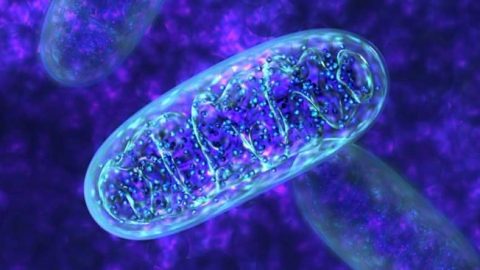
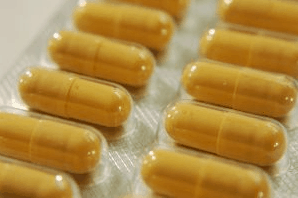
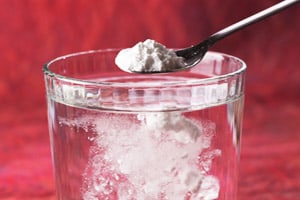


THIS WAS A LONG ARTICLE THAT MEANS NOTHING TO ALMOST (IF NOT ALL) OF US WHO READ BRINK ZONE. MOST OF US LOVE EXERCISE. WE DO NOT WANT TO HEAR THEY MAY COME UP WITH A PILL TO MAKE LAZY PEOPLE THINK THEY ARE JUST AS HEALTHY AS THOSE OF US THAT WORKOUT ALL OUR LIVES. (AND THEY WILL). I DID NOT LIKE THIS AT ALL. SORRY ! RICH
Rich, I suggest you read the article again, and closer in terms of the actual details. The “downsides” of such an approach are also covered, etc.and it’s made clear such an approach will not replace exercise…. Regardless, the science is the science, one does not have to “like it” for it to exist.
Two, typing in all caps = yelling at people on the ‘net, which I’m sure is not your intent. 🙂
Also Rich, for all of the lifters out there (including myself), this stuff is important for maximizing your progress. With out understanding nutritional science, your workout may be wasted. What I appreciate about the BrinkZone is that it takes away the “we just lift” mentality and looks at fitness in a structural perspective. Since learning of this website and heading its advice I have had a lot of progress in the gym. Such as understanding the science behind why brocolli and spinach in the diet is imperative for body cleansing and resisting injury. Science is everything in fitness because your body is a product of science!
Fascinating article from Monica. Understandable to the layperson yet supported by solid science. Everyone who exercises regularly, intuitively knows the conclusions this article presents; to lose weight, build or maintain muscle and health, one must eat correctly and get up off the couch to exericse.
Yes. The article is aimed at both regular exercisers and non-exercises alike, with a different take-home message:
If you are a regular exerciser; an exercise mimetic/mitochondrial booster could give you a little extra “push”.
If you are a couch potato; no pill in the word will make up for your lazy ass!
LOL Yes, and people would certainly work out with intensity at their mandated fitness classes! 😛 I’m not saying remove the profit motive and liberty to choose, but perhaps having physicians (not under HMO management) properly trained to treat folks with nutrition, exercise prescription, and lifestyle management instead of (poly)pharmaceuticals as a first resort.
Not to say there aren’t people that understand this level of detail but I have to agree with Rich that the granularity of the article is far more detailed than most people comprehend or can benefit from. Still a very informative read and although there’s no substitute for exercise, I’d like to get my hands on these pills and see how they’d benefit an an aging 47 year old wannabe bodybuilder like me…
John, as you know, the BrinkZone info ranges from “hard” science (highly detailed, granular, lengthy, etc) to very simple (Shake Weight Review!) to silly fun, and everything between. I think people without science backgrounds can still get the ‘take home’ message from this article if they apply themselves and take some time to see what her big picture conclusions are.
Great article. Too much reliance on pills leads to disappointment. I am taking Resveratrol because I test my blood glucose in the morning, and found I dropped 10 points, from 92 down to low 80s with 100 mg twice a day. I argue that we should never take something if we can’t measure the body’s response.
Thanks, Monica! At 56, I am all for doing whatever I can to boost mitochondrial functioning and biogenesis. Your article has me about to order some PQQ caps from Life Extension. And you are so right. The psychological effects like self-esteem, acquired through exercise, are huge. When you feel your body start to slow down, your recuperative abilities decline and your ability to gain muscle/lose fat stall, it’s a challenge to push on. Whatever can help is a blessing.
You’re welcome Kathleen 🙂
I’m glad you get the message; supplements can help but never substitute for the real thing, which is exercise combined with a proper diet.
Keep it up!
I enjoyed reading a blog article with 169 citations – this is a piece I can trust. Most articles on such topics just give you someone’s opinion, maybe food for thought or something to research later. After reading this, I don’t need a whit more info on ‘exercise mimetics’.
As to when physical activity will be considered legitimate medical treatment…maybe when incentives are provided for the medical system to keep people healthy, instead of funneling the maximum amount of money to pharmaceutical companies, insurance companies, management companies, etc.
I’m glad you find my article informative and solid. It gives me goosebumps when I ready lay or popular press publications that only tell one side of the story, or make biased conclusions without any references. That’s why my articles tend to be a bit long; a bit simplification might be necessary in order for non-scientific folks to understand, but too much simplification runs the risk of causing confusion and downright erroneous messages.
Yes, the government should make it a mandate to have people take 1-2 hours off from work every day just to exercise, and compensate the employers and pay for gym memberships. That way there would be no “I don’t have time” or “I cannot afford” BS excuses! And it would generate more jobs since more gyms would have to open up 🙂 🙂
Thank you Monica. I love research oriented articles like this. The data is right there in the citations, which means we are reading about facts, not vague opinions. And I completely disagree with Rich, the article means a lot to me. I use supplements as a complement, not a substitution for exercise. If there is a supplement that I feel has enough evidence to suggest a health benefit I’m looking for, I might try it. I
Will, I loved this article. I am up on it, anyway, but I would think the body/muscle builders wold be delighted in hearing about supplement stimulators that do not present any known dangers and do add significantly to enhancing muscle growth. Loved the references since many would tend to doubt the authenticity without them. the Brink Zone is, in my mind, 100% science backed and that is why I come here exclusively for info on a regular basis. I like Life Extnesion Foundation but they have aversions to focus on bodybuilding though their findings often touch on it lightly.
I note that some do not like the “heavy” science. But my reply to that would be that ignorance is no bliss and if one strays from science, they could be vulnerable to many scams of which many of those have been covered on this blog. Some of it looks intimidating but I say this. If you are not yet well versed in science lingo or concepts biology and nutrition, then there is no better time to start than right now. Muscles do not get bigger without use and the same for the brain and understanding. Use it or lose it.
The “science” does require most focus and concentration and far more time to digest, but after a while, it becomes much faster, easier and you become more proficient. It is worth the effort. Lots of pseudo science in the mainstream media that readers can become wise to, by getting to know real science with references which the mainstream likes to avoid.
Will, the only thing I might suggest for those intimidated is writing a very simple brief abbreviated summary and then followed by the long detailed article to reinforce your points. Maybe they will not read the detail but at least you have given them an opportunity to do so and help themselves grow as individuals and sharp minds. But for myself, I am most grateful that you take the science so serious. I’d be nervous otherwise. There is safety and protection in knowledge. Its like wearing a shield and armor.
“Will, the only thing I might suggest for those intimidated is writing a very simple brief abbreviated summary and then followed by the long detailed article to reinforce your points.”
I didn’t write the article Scott, Monica did. She concluded:
“However, exercise is and always will be necessary. Sorry folks, there are no magic bullets. There’s simply no way around it. Amen!!!”
Seems like a pretty straight forward conclusion to me! 🙂
Well, kudos to Monica! She really waded into the science aspect and I like it. I think people need to exercise their brains and neurons just as they do their muscles. Call it a holistic workout!
Scott, I’m glad you like my article and approach to writing. And you’re so right, “Use it or lose it” applies to both our muscles and brain cells. Here you got some references that support the importance of intellectual stimulation for building and maintaining the cognitive reserve, which is an important component of successful aging 🙂
Use it or lose it: environmental enrichment as a means to promote successful cognitive aging.
Frick KM, Benoit JD.
ScientificWorldJournal. 2010 Jun 16;10:1129-41.
Neuroprotective effects of cognitive enrichment.
Milgram NW, Siwak-Tapp CT, Araujo J, Head E.
Ageing Res Rev. 2006 Aug;5(3):354-69. Epub 2006 Sep 1.
Monica,
That was a well-written and (obviously) well-researched article. The length should never be a problem as long as you’re addressing a topic. So for those who prefer not to read all of it due to length, you’re losing out on some valuable information.
Okay, I’m very glad to see someone address the functions and the influence of the mitochondria. These lil’ energy storehouses have not been given much attention. What they do and how to prevent (premature) death in the cell is very important. It’s great that you discussed the various age-related and diseased states of mitochondria impairment. In terms of fitness, we tend to focus on muscle growth primarily, without taking into account what occurs at the cellular level. Also, age-related macular denegeration helps skin lose its elasticity (read: produce wrinkles), which is why Alpha-lipoic acid and Acety-L-carnitine tend to show a bit of benefit; they address dying mitichondria.
The questions I have concerns Resveratrol and its association with mitochondrial functioning. Does resveratrol act somewhat like creatine in that it staves off fatigue? Granted, it doesn’t donate phosphate molecules or anything, but it seemed to have done this (stave off fatigue) in lab mice. Also, is the synthesized version (pill) efficacy equal to that of the red wine. On the one hand, can the pill survive the pepsin environment of the stomach, but on the other hand, we must account for the fermentation, heat, storage, and other processes by which wine is made. Last, does resveratrol support against atrophy in non-exercising populations? That is if one exercises regularly wouldn’t proper nutrition along with resistance training (including cardio work) still be required at some point to maintain homeostasis rather than atrophy? Resveratrol alone couldn’t help or could it?
I welcome yours (Will’s, and anyone else’s) answers. Thanks for a very good article and thanks for pointing out the truth about how ‘exercise mimetics’ can be severely misleading. Much like the current-stimulated exercise belts (great for coma patients though), nothing can take the place of phyical labor (exercise) whereby some physiological pathways must be influenced by resistance and not just a muscle contraction that is artifically stimulated.
-Derrick
I’m glad the mere length of my articles isn’t scaring away everybody; Will is taking good care of the folks here with shorter attention spans (…wink@ Will), so I’m catering more to those of your who “wanna know it all” (myself included, haha! I get bored whenever I ready anything that doesn’t provide me with enough details needed to understand mechanistic rationales. If the references are missing i get outright mad). 🙂
The beneficial effects of resveratrol on mitochondrial aspects has not directly to do with ATP production (like creatine, which donates phosphate from CP to ADP to generate ATP), but rather that it activates signaling pathways that are involved in mitochondrial biogenesis. It is the increase in mitochondrial number and/or mitochondrial respiratory chain enzyme activity that could confer performance / endurance enhancing effects.
While it has been shown that resveratrol helps counteract muscle atrophy in rats, we don’t know if it also does in humans. I don’t recommend relying on a pill for that; again, actual exercise and proper nutrition will always be necessary for any health, performance and longevity pursuit.
I will answer your questions on resveratrol bioavaliability in an upcoming article (where I will also cover safety and give practical dosage recommendations).
Love the article and your translations Monica. Now, whenever any of my three sisters ask me, “When are you going to create a Pill so I don’t need exercise” I’ll point them to this post and tell them; no pill like that will ever exist and here’s why”. On the other hand, I shall create nano machines to fully replicate strength and healing and not share it with either of you. MUAHAHAHAHA!! XD
As long as you make your nano bots chase and beat up all the lazy asses around, I am all for it! 🙂 🙂
One of the best written articles I’ve read in a long time. Great insight on the potential of these supplements. I’m especially interested in SIRT1 activators. The stressing of exercise as the primary and the supplements as the aids is key. You are not only smoking hot on the outside but your Brain is Delicious. Thanks for helping to always stay motivated to work out, please keep up the great info and inspiration.
Best Wishes, Will
Thank you for the compliments. I am glad the length of the article didn’t scare you away. You can find more of my articles (scientifically based and well referenced as always) at http://www.trainergize.com
Try this one!!! The deeper the color of food??? The deeper the ACSMS(deeper re-active stimuli)!!! Any comment ??? Research done by PRISMS 1968 (McGill University Med. Library).
Let me see if i got this right??? Brains, Builded -body, Bodacious, and Befuddling ! No Will ! It is definitely not you!!!
So you don’t find me Befuddling?
We are moving more toward a “Brave New World,” with a pill for everything! Thanks for a good article, as always.
They have! Needles Teas (White, Green, Black), amongst others, have been a miracle pill, or tea sachets for thousands of years. We are still studying 40 years behind the times, even with the most advanced Tech’s. Rick